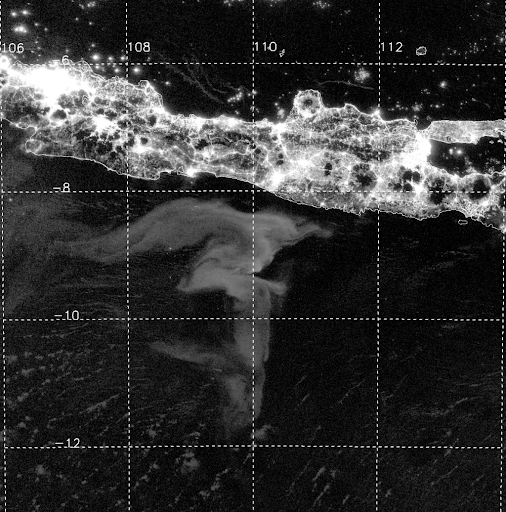Geography
Milky Sea Phenomenon
- 28 Aug 2021
- 4 min read
Why in News
The scientists are using new satellite technology Day/Night Band to find glow-in-the-dark milky seas.
Key Points
- About:
- Also called mareel, it is a rare form of marine bioluminescence where the nocturnal ocean surface produces a widespread, uniform and steady whitish glow.
- Bioluminescence is light produced by a chemical reaction within a living organism.
- About two or three milky seas occur per year worldwide, mostly in the waters of the northwest Indian Ocean and off the coast of Indonesia.
- Sometimes exceeding 1,00,000 km2 in surface area, it persists for days to weeks, drifting within doldrums amid the prevailing sea-surface currents and aligning with narrow ranges of sea-surface temperature and marine biomass in a way that suggests water mass isolation.
- Also called mareel, it is a rare form of marine bioluminescence where the nocturnal ocean surface produces a widespread, uniform and steady whitish glow.
- Causes:
- Arises from a saprophytic relationship between luminous bacteria and microalgae that expresses on the macroscale.
- A strain of luminous bacteria called Vibrio harveyi colonizing algae at the water's surface has been found.
- Indian Ocean Dipole (IOD):
- During its positive phase, the IOD corresponds to warm/wet conditions with warm pooling waters on the western side of the Indian Ocean, and cool/dry conditions with strong easterly winds on the eastern side.
- These winds generate upwelling of cool, nutrient-rich coastal waters which drift offshore with the currents, leading to algal blooms over a broad region, and potentially, conditions favourable for milky sea genesis.
- Arises from a saprophytic relationship between luminous bacteria and microalgae that expresses on the macroscale.
- Purpose:
- Luminous bacteria cause the particles they colonize to glow. The purpose of this glow could be to attract fish that eat them.
- These bacteria thrive in the guts of fishes, so when their populations get too big for their main food supply, a fish's stomach makes a great second option.
- Detection:
- Source of Information: The awareness of milky seas is recorded primarily from mariner sightings concentrated in the major shipping lanes.
- In 1995, the low-light satellite measurements provided the first overview of a milky sea, off the Somalia coast.
- Instrument for Detection:
- Operational Linescan System (OLS): Carried by Defense Meteorological Satellite Program (DMSP) series of military weather satellites (US).
- This instrument is capable of detecting very weak light sources.
- Day/Night Band (DNB): It is planned for US’ National Oceanic and Atmospheric Administration’s and part of the Visible Infrared Imaging Radiometer Suite (VIIRS) and is carried on satellites.
- Operational Linescan System (OLS): Carried by Defense Meteorological Satellite Program (DMSP) series of military weather satellites (US).
- Limitations: These instruments have several limitations from the standpoint of milky sea detection.
- The OLS cannot detect the more common bioluminescence events associated with disturbed-water due to their, typically small extent.
- The DNB’s spectral response is also sensitive to mesospheric airglow emissions, which occur as both reflected light off the clouds and as direct upwelling emissions to space.
- Atmospheric gravity waves modulate the intensity of light and form patterns of brightness having spatial scales similar to those expected from milky seas.
- Source of Information: The awareness of milky seas is recorded primarily from mariner sightings concentrated in the major shipping lanes.







